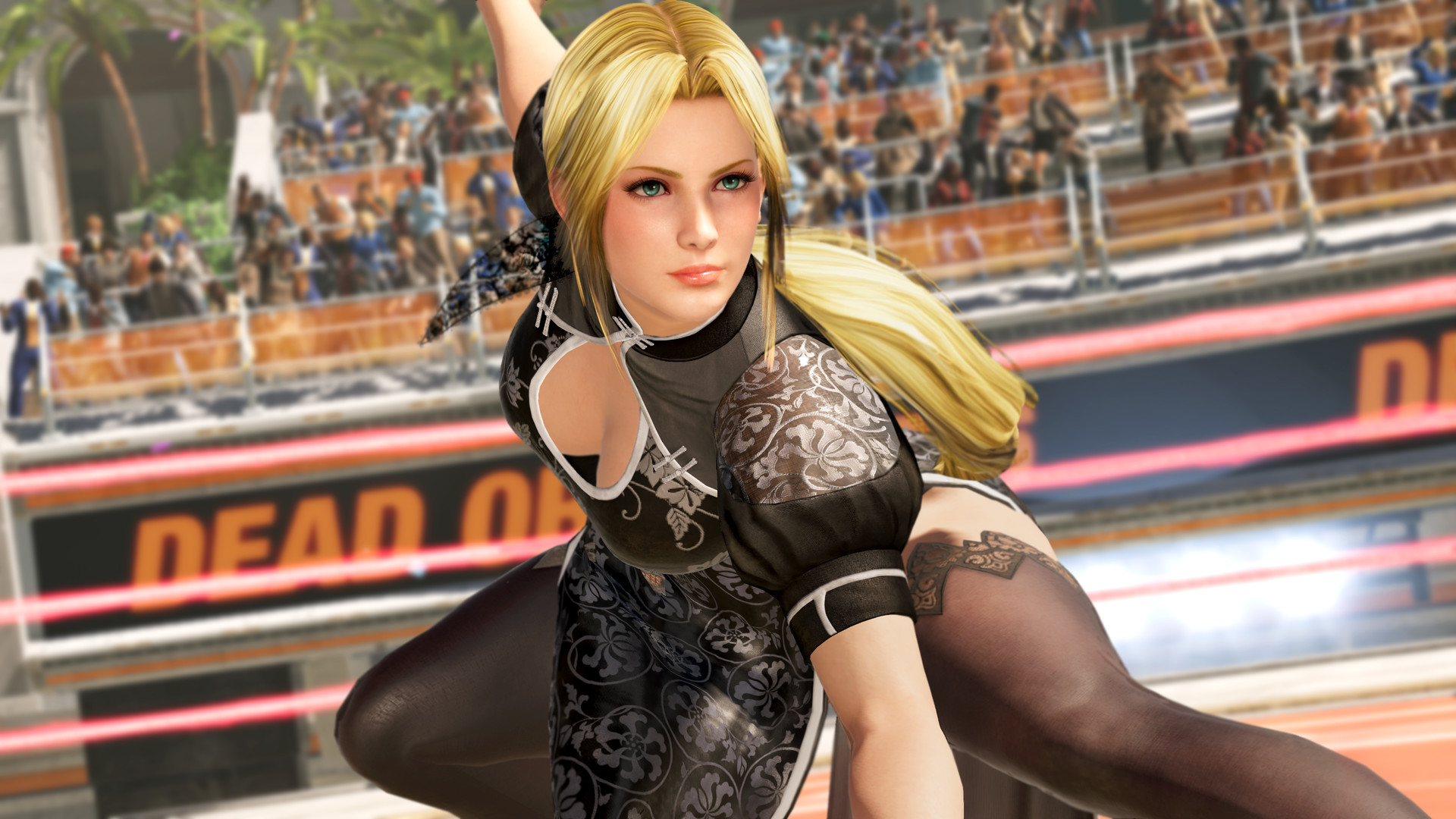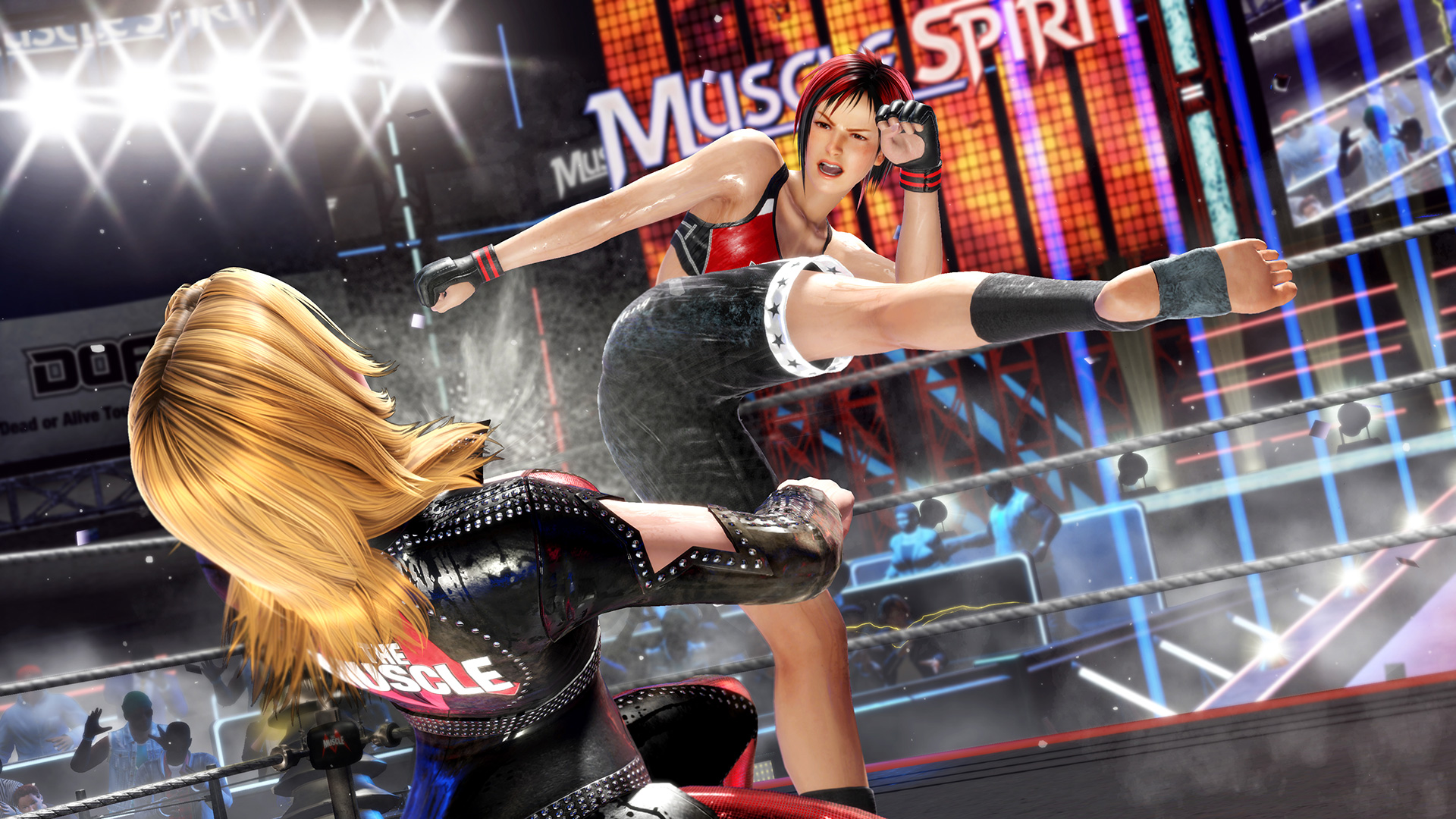Dead or Alive 6 review
A friend of mine reckons that the mark of a good fighting game is how fun it is when played with friends. Not online, but the old-fashioned method of having folks sat in the same room, passing controllers around and having a few laughs. The Dead or Alive series has almost always delivered that couch multiplayer quality, and this sixth outing is no exception.
But let’s address the bikini-clad elephant in the room, before we begin: yes, there are still lots of boobs and butts in Dead or Alive 6. Team Ninja did say that the skimpy outfits wouldn’t be front-and-centre in this sequel, but they are still there, mostly tucked away behind the game’s actually rather poor handling of unlocking new outfits. Whether you can forgive the use of sexy ladies in the series or not is up to you, and you’ll just have to make your peace with that, should you choose to pick up the latest game.
I mention that early in the review, because I wanted to start with how richly detailed the character models are in Team Ninja’s newest fighter. I won’t pretend that they rival those of Injustice 2, but they are still very impressive at times. Each character looks unique, and the new engine allows for some fantastic attention to detail, from the basics of their flowing hair to the way they actually drip sweat, and gather dirt and cuts as they fight. At the end of one fight as Jann Lee, the series’ tribute to the legendary Bruce Lee, I could actually see tiny rivulets of sweat as they wound their way through the patches of dirt on his bare chest. This also goes to show that the developer hasn’t put its efforts solely into the ladies of this game, which I think it’s fair to say that Team Ninja has been guilty of in the past.
That said, the likes of series leads Kasumi and Ayane, as well as newer characters such as Honoka and Marie Rose, have more outfits to unlock than most of the fellas in Dead or Alive 6. Some of those are cleavage-intensive or just show a bit of skin, so again you’ll have to make your peace with that if it’s not your thing, but unlocking them is no easy feat, thanks to the extreme grind required to unlock them, and the often random way the whole system works. Each costume requires a certain number of pattern parts to unlock them, but you can’t just earn general pattern parts and spend them willy-nilly, because that would make too much sense. No no, you have to unlock parts for each specific costume, but they are seemingly awarded at random, and it takes an awful lot of grinding and luck to get the parts you want. Think that sounds confusing? That’s because it bloody well is. Even worse, once you’ve fluked your way to unlocking an outfit, you’ll still have to buy it with the in-game currency. Thankfully, this is quite plentiful and is earned through most modes in the game.
This is where Dead or Alive 6 gets it very right. There are more modes than you’ll know what to do with, such as the traditional Story, Arcade and Survival modes. These are on top of the Versus mode (excellent when engaging in a bit of local multiplayer) and the extensive Training mode that will walk you through everything from basic fighting to complex, multi-part throw combos, and even offers a challenge mode in which you’ll attempt increasingly difficult combos.
Perhaps the most interesting new addition is DOA Quest. This is a series of challenge fights that task you with completing various objectives within each bout. Beat all three objectives and you will get a bonus, which is usually pattern parts, making DOA Quest the best way to unlock new outfits for your favourite characters. This mode is a fantastic way of helping players to feel comfortable with playing as different characters too, as well as teaching them how to perform certain moves and combos, all while still having to win an actual fight. It’s a real “one more go” mode, especially when you’re trying to complete that one challenge or a specific objective.

The fighting itself is still what matters and Dead or Alive 6 is as fun, fluid and intense as ever. The controls are simpler than new players might expect, with only one punch button and one kick button, as well as throw and hold buttons. It’s not a shallow system at all; the simplicity belies the depth beneath the surface, but it’s certainly the most accessible fighter I’ve played to date. There is quite a lot of rhythm to the game’s combo system, with various combinations of directions and buttons resulting in some pretty impressive chained attacks, without the need to memorise button combinations that look like they belong on a physicist’s whiteboard. If you want to go deeper, there are some extremely complex combos for high-level play, but it’s entirely possible to enjoy a good scrap while using the basics.
In the previous game, there were some fairly impressive special moves, but they required some intricate knowledge of each character’s move list and were difficult for regular players to pull off. In Dead or Alive 6, this system has been simplified through the use of the new Special button, which can be used in various ways to inflict massive damage. Multiple taps of R1 (on PS4) will result in a spectacular combo, culminating in a fairly showy final attack, whereas pressing forward and R1 will perform a Break Blow, a faster way of jumping straight to that final hit and a great way to wrap up a flurry of light attacks. It isn’t all about the offensive attacks however, as a carefully-timed tap of back and R1 will have you parrying an attack that would otherwise be incredibly difficult to counter, leaving your opponent open to a good knuckle sandwich. These specials can only be performed when you have filled a certain amount of your energy gauge, and if you miss, that energy is spent and you might be left wide open for an absolute pasting by your opponent. It makes for a more strategic element, adding an extra layer of depth to each bout. I won’t lie though: when you land a finishing blow with a special, it never gets old. And when you use a special to evade someone else’s use of theirs? Pure magic, every single time.

Careful use of specials is even more necessary when playing online, because some players will know exactly how to counter your nonsense. As I mentioned at the start of this review, a fighter can live or die by its local multiplayer, but in today’s market, that goes double for online bouts. Thankfully, Dead or Alive 6’s servers have been rock solid for me. Even the PlayStation Plus beta was mostly smooth, and the full game is even better. It’s not perfect by any means, as the only option right now is Ranked matches, but you can select to find players with a specific connection quality to ensure that each fight is buttery smooth, and the ranking system ensures that you’re matched against players of a similar skill level. It seems like a no-brainer, but not every fighter uses this system yet. I encountered no disconnections or lag during my time on the servers, or any issue of any kind for that matter, and hopefully that will continue once the game releases and everyone piles on.
Multiplayer is rather good then, but what of the game’s main single player mode: Story? Well, that’s a real strange affair, and not just because its nonsense levels are off the chart. Team Ninja deserves some credit for attempting something a little different, with a sort of semi-non-linear way of doing things, but it does hit wide of the mark due to its confusing layout.
The Story menu is essentially a grid, with a column for the main storyline down the left side and separate columns for each character alongside it. The thing is, some character prologues aren’t even unlocked until you’re several chapters into the main arc and you often wonder what the hell is going on, as you stare at this grid filled with locked squares dotted around at random. Once you take in each chapter’s main story beat, it will unlock a series of events for certain characters within that chapter (and often elsewhere), which you can tackle in any order you want. Essentially, these will attempt to show you what else is happening in the background, as Helena, Hayate, Ayane and Kasumi take centre stage in the main arc.

Fighting game stories are often weird and nonsensical, and Dead or Alive is no different. There have been clones, assassinations, weird parental relationships and some very questionable behaviour from characters like Zack, and in Dead or Alive 6 these are all present and correct. Just not politically correct, obvously. I think of the story scenes like Anime, with their over exaggerated animations and bizarre (but often lovable) behaviours, though I wish they looked better. While the in-game visuals are solid and intricately detailed, the cutscenes are strangely compressed and although there’s a certain “old school kung fu movie” charm to the mismatched lip syncing, I’m not sure it’s okay in today’s market. That said, the daft voice acting does help with the charm. Almost like the original Resident Evil games, unfortunately with a similar amount of loading screens.
If you can look past its issues in Story mode, and the massive grind required to unlock new outfits, Dead or Alive 6 is a cracking fighter. There is so much content here that you’ll be playing for months, especially if you want to complete all of DOA Quest’s objectives, and you will always be learning about how to play, should you want to. And you know what? My friend was right, because this game is incredibly fun with friends, and that really is the core of creating a good fighting game.
But Dead or Alive 6 isn’t good; it’s great.




